[javascript protected email address]
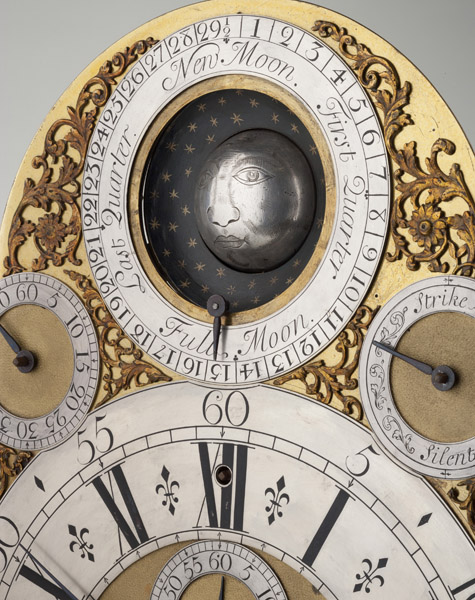
William Webster, London

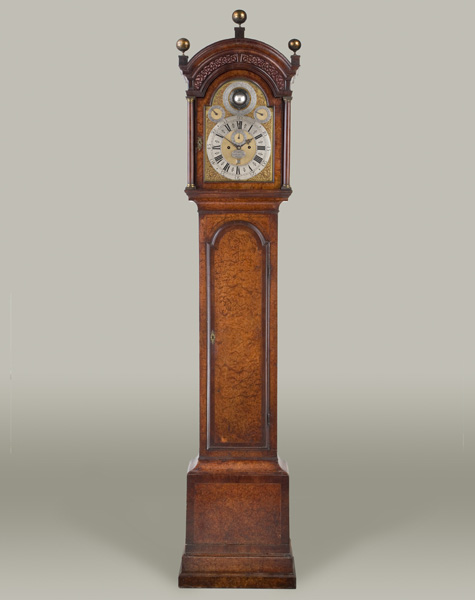
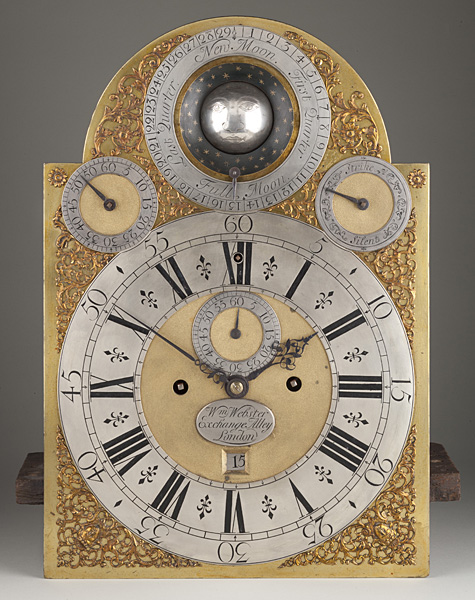
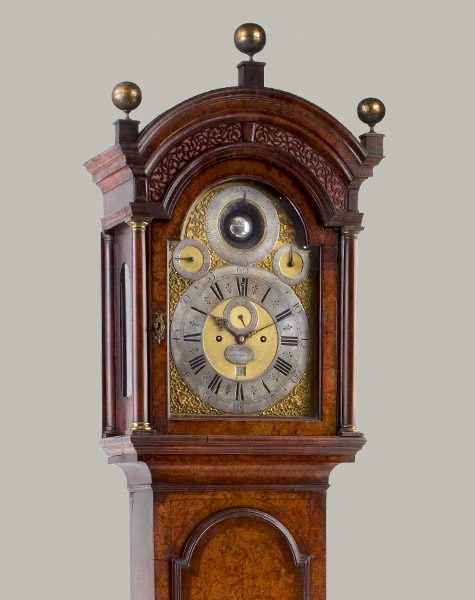
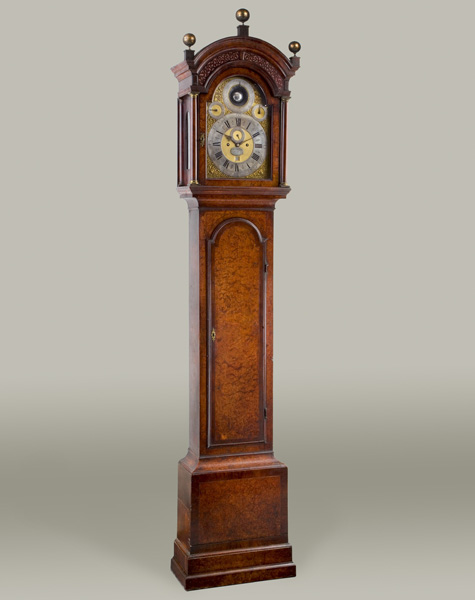
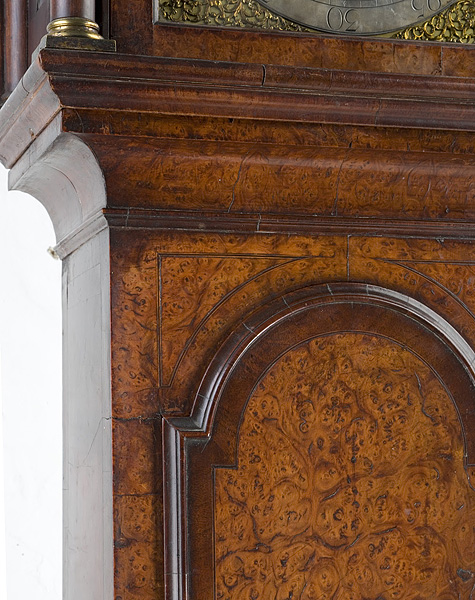
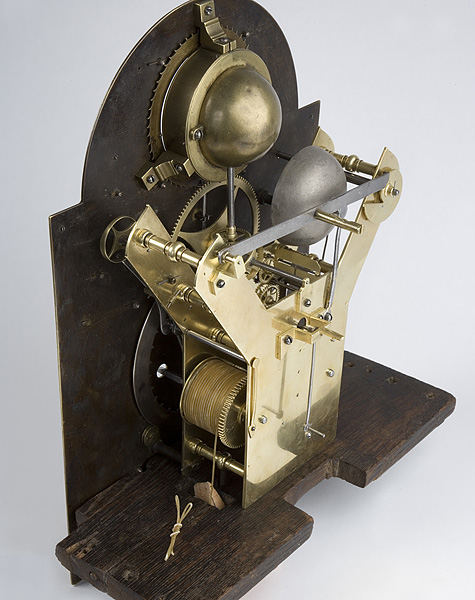
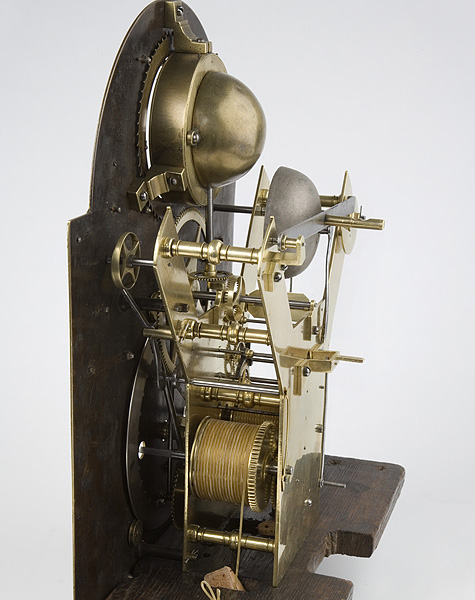
Circa 1730
Sold
8ft 6inches high
A very rare George II burr elm month going astronomical longcase clock. CASE The rectangular base of the case has walnut cross-banding centred by a panel of burr elm framed by fine boxwood and ebony line inlay and it is raised on a double skirt with alternate convex and concave mouldings. The breakarch trunk door is similarly cross-banded and the hood is flanked by brass-capped detached columns which support an entablature which has a pierced walnut sound fret and is surmounted by three finials. DIAL The 12 x 13 inch breakarch brass dial is signed Will. Webster Exchange Alley London on a chamfered oval silvered plaque in the matted centre with calendar aperture and subsidiary seconds ring. The silvered chapter ring has Roman and Arabic numerals with fleur de lys half hour markers and lozenge half quarter inter-markers. Finely pierced blued steel hour, minute and seconds hands. The arch is centred by a revolving silver moon sphere which is delightfully engraved with the moon’s ‘face’ on one half and painted black on the reverse; the sphere rotates in conjunction with the hour and minute hands. The moon is framed within a blue and gilt starry sky within an outer concentric silvered ring which is engraved with the various states of the moon: Full Moon - First Quarter - Half Moon - Last Quarter. The lunar calendar is engraved 1-29½ on the outer part of the ring indexed by means of a perpetually driven small blued steel hand which rotates with the lunar cycle every 29½ days– a steel square in the centre of chapter XII may be used to manually re-set the lunar sphere. Two silvered subsidiary rings flanking the moon: the ring on the left calibrated 1-60 is to adjust the height of the pendulum and thereby regulating the speed of the clock. The right flanking ring is for strike/silent adjustment. MOVEMENT The very fine quality movement has unusual Y-shaped brass plates with eight ring-turned pillars. The delicate five wheel going train has a recoil anchor escapement; the pendulum is suspended above the plates on a steel bar which is adjusted by a brass snail which is in turn raised and lowered by the subsidiary regulation ring to the left side of the main dial. The strike train is governed by a steel rack on the front plate and the hours are struck on a vertical bell held between the plates. The moon sphere perpetually rotates within a brass cowling on the back of the dial and is indirectly driven from the motion work via a worm-and-wheel system to a contrate wheel between the plates. WILLIAM WEBSTER William Webster was Free of the Clockmakers Company in 1710 (d. 1737) He was a particularly eminent clockmaker, having apprenticed to the great Thomas Tompion and went on to become his journeyman until Tompion died in 1713. At which point Webster set up his own business. An advertisement, appeared in The Englishmen, November 21-24, 1713 and The London Gazette, November 24-28, 1713. On the 20th instant Mr. Thomas Tompion, noted for the making of all sorts of the best Clocks and Watches, departed this life. This is to certify that all persons, whatever quality or distinction. that WILLIAM WEBSTER at the Dyal and Three Crowns in Exchange Alley, London, served his apprenticeship and lived as a Journeyman a considerable time with the said Mr. Tompion, and by his industry and casre is fully acquainted with the secrets of the said Arts. COMPARABLE LITERATURE For a very similar dial and movement by Webster: Roberts, Derek, British Longcase Clocks, Schiffer, 1990, (Astronomical & Equation clocks), p. 87, fig. 112 A, B & C
